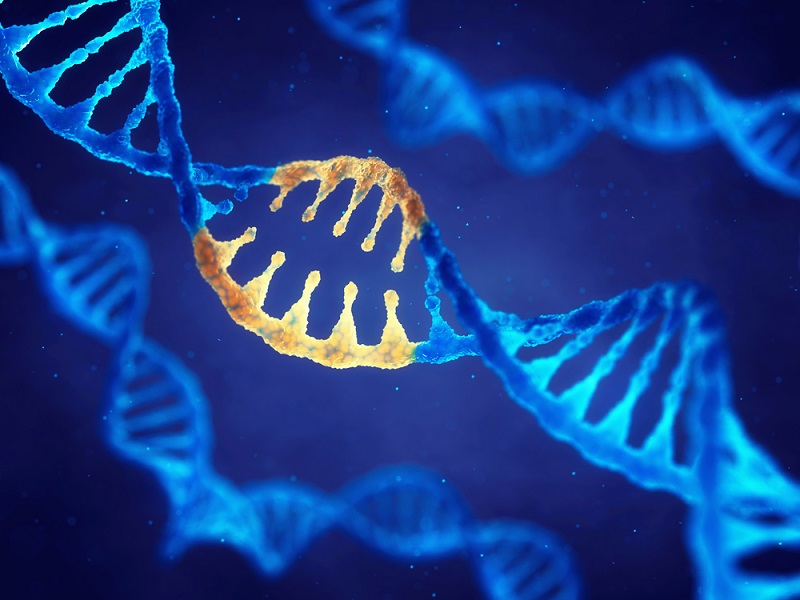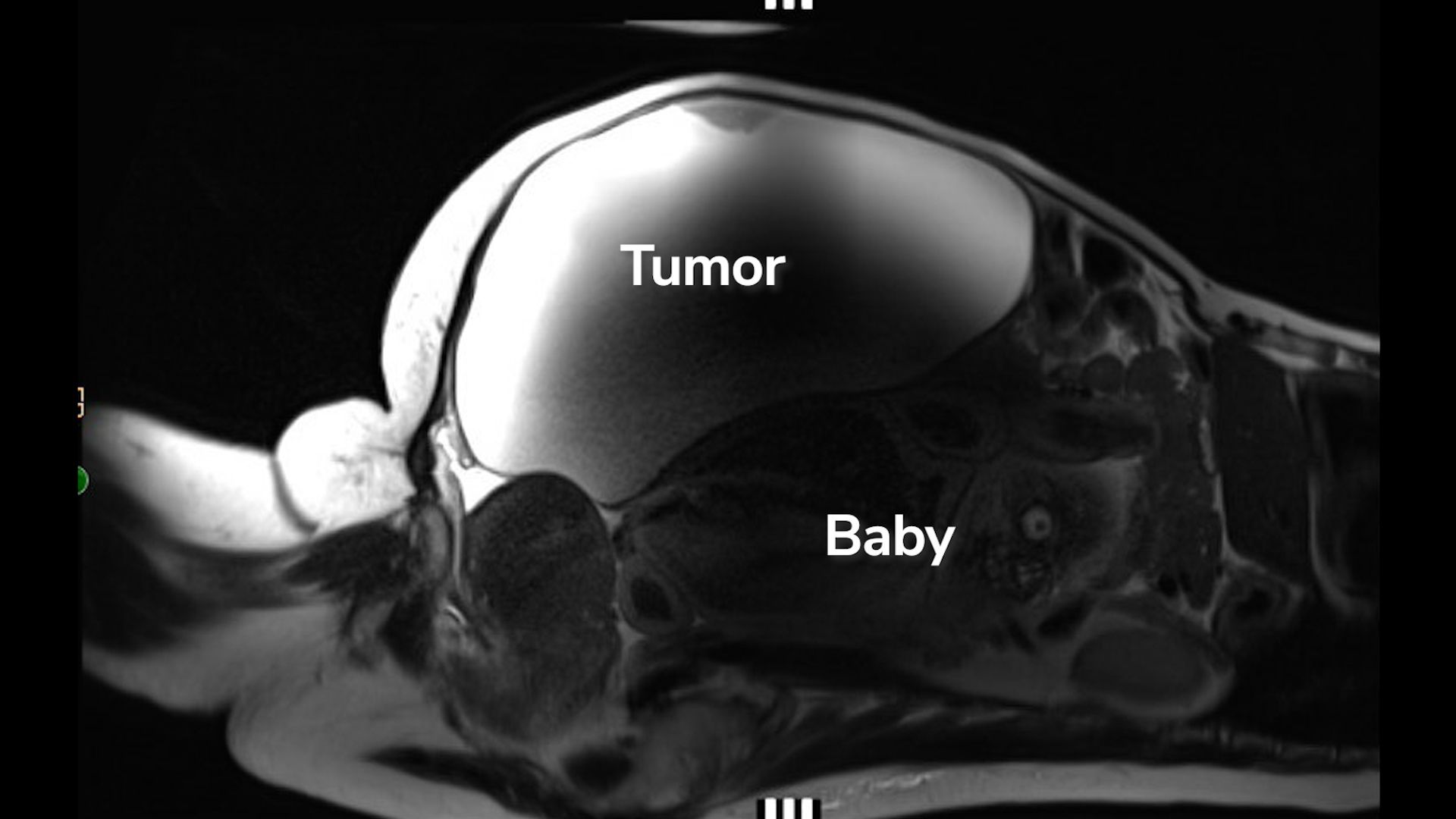Chinese Scientists Tried to Treat HIV Using CRISPR
They didn't cure HIV, but experts are still excited about it.

Scientists in China have used CRISPR gene-editing technology to treat a patient with HIV, but it didn't cure the patient, according to a new study.
The work, published today (Sept. 11) in The New England Journal of Medicine, marks the first time this particular gene-editing tool has been used in an experimental HIV therapy, according to the authors, from Peking University in Beijing.
Even though the treatment didn't control the patient's HIV infection, the therapy appeared safe — the researchers did not detect any unintended genetic alterations, which have been a concern in the past with gene therapies.
Related: 10 Amazing Things Scientists Just Did with CRISPR
Experts praised the work as an important first step toward being able to use CRISPR, a tool that allows researchers to precisely edit DNA, to help patients with HIV.
"They did a very innovative experiment on a patient, and it was safe," said Dr. Amesh Adalja, an infectious disease specialist and a senior scholar at The Johns Hopkins Center for Health Security in Baltimore, who was not involved in the study. "It should be viewed as a success."
The new study is very different from the unrelated, controversial case of a Chinese scientist who used CRISPR to edit the genomes of twin babies in an attempt to make them resistant to HIV. In that case, the Chinese scientist edited the DNA of embryos, and these gene alterations can be passed down to the next generation. In the new study, the DNA edits were made in adult cells, which means they cannot be passed on.
Get the world’s most fascinating discoveries delivered straight to your inbox.
The study involved a single patient with HIV who had also developed leukemia, a type of blood cancer. As a result, the patient needed a bone marrow transplant. So the researchers used this opportunity to edit DNA in bone marrow stem cells from a donor before transplanting the cells into the patient.
Specifically, the researchers used CRISPR to delete a gene known as CCR5, which provides instructions for a protein that sits on the surface of some immune cells. HIV uses this protein as a "port" to get inside cells.
The small percentage of people who naturally have a mutation in the CCR5 gene are resistant to HIV infection.
What's more, the only two people in the world thought to be "cured" of HIV — known as the Berlin patient and the London patient — had the virus seemingly eliminated from their bodies after receiving bone marrow transplants from donors who had the natural CCR5 mutation.
However, since it can be difficult to find bone marrow donors with this particular mutation, the researchers hypothesized that genetically edited donor cells might have the same effect.
One month after the patient received the transplant, his leukemia was in complete remission. Tests also showed that the genetically edited stem cells were able to grow in his body and produce blood cells. These genetically edited cells persisted in the patient's body for the entire 19 months that he was followed.
In addition, the researchers did not see any "off-target" effects of the CRISPR gene editing, meaning the tool did not introduce genetic changes in places where it wasn't intended or could cause problems.
However, when the patient briefly stopped talking his HIV medications as part of the study, levels of the virus increased in his body, and he had to start taking his medication again. This response was unlike that of the Berlin and London patients, who were able to remain HIV free without taking medications.
The low response in the Beijing patient likely occurred, in part, because the gene-editing process wasn't very efficient. In other words, the researchers weren't able to delete the CCR5 gene in all of the donor cells.
Still, "we believe that this strategy [is] a promising approach for gene therapy" for HIV, study senior author Hongkui Deng, a professor of cell biology at Peking University, told Live Science.
One potential way to improve the gene-editing process would be to start with so-called pluripotent stem cells, which have the potential to form any cell type in the body, Deng said. The researchers would edit these cells with CRISPR to inactivate CCR5, and then coax the cells into becoming the blood stem cells used for bone marrow transplants. This strategy could result in a greater number of donor cells having the edited CCR5 gene, Deng said.
It's important to note that this type of gene-therapy treatment was only possible because the patient also happened to need a bone marrow transplant, and so it's not something that could be applied in its current form to the average HIV patient.
"These aren't ordinary individuals with HIV," Adalja told Live Science. "These are people who have HIV and also have a need for a bone marrow transplant," he said. Adalja added that a bone marrow transplant can be a dangerous procedure.
Although the CCR5 mutation protects against HIV, some studies suggest that the genetic modification might have other harmful effects. For example, a study published earlier this year found that the natural CCR5 mutation was linked with an increased risk of early death. However, the researchers note that with their HIV treatment, they are modifying the CCR5 gene only in blood stem cells, which wouldn't affect the CCR5 gene in other tissues in the body.
In an editorial accompanying the study, Dr. Carl June, director of the Center for Cellular Immunotherapies at the University of Pennsylvania Perelman School of Medicine, said that future research using CRISPR for HIV should follow participants for even longer periods, because harmful effects from gene therapy, such as cancer, may take years to show up. June, who was not involved in the new study, previously conducted gene therapy for HIV, although not with CRISPR.
- Unraveling the Human Genome: 6 Molecular Milestones
- 27 Devastating Infectious Diseases
- Bionic Humans: Top 10 Technologies
Originally published on Live Science.

Rachael is a Live Science contributor, and was a former channel editor and senior writer for Live Science between 2010 and 2022. She has a master's degree in journalism from New York University's Science, Health and Environmental Reporting Program. She also holds a B.S. in molecular biology and an M.S. in biology from the University of California, San Diego. Her work has appeared in Scienceline, The Washington Post and Scientific American.


